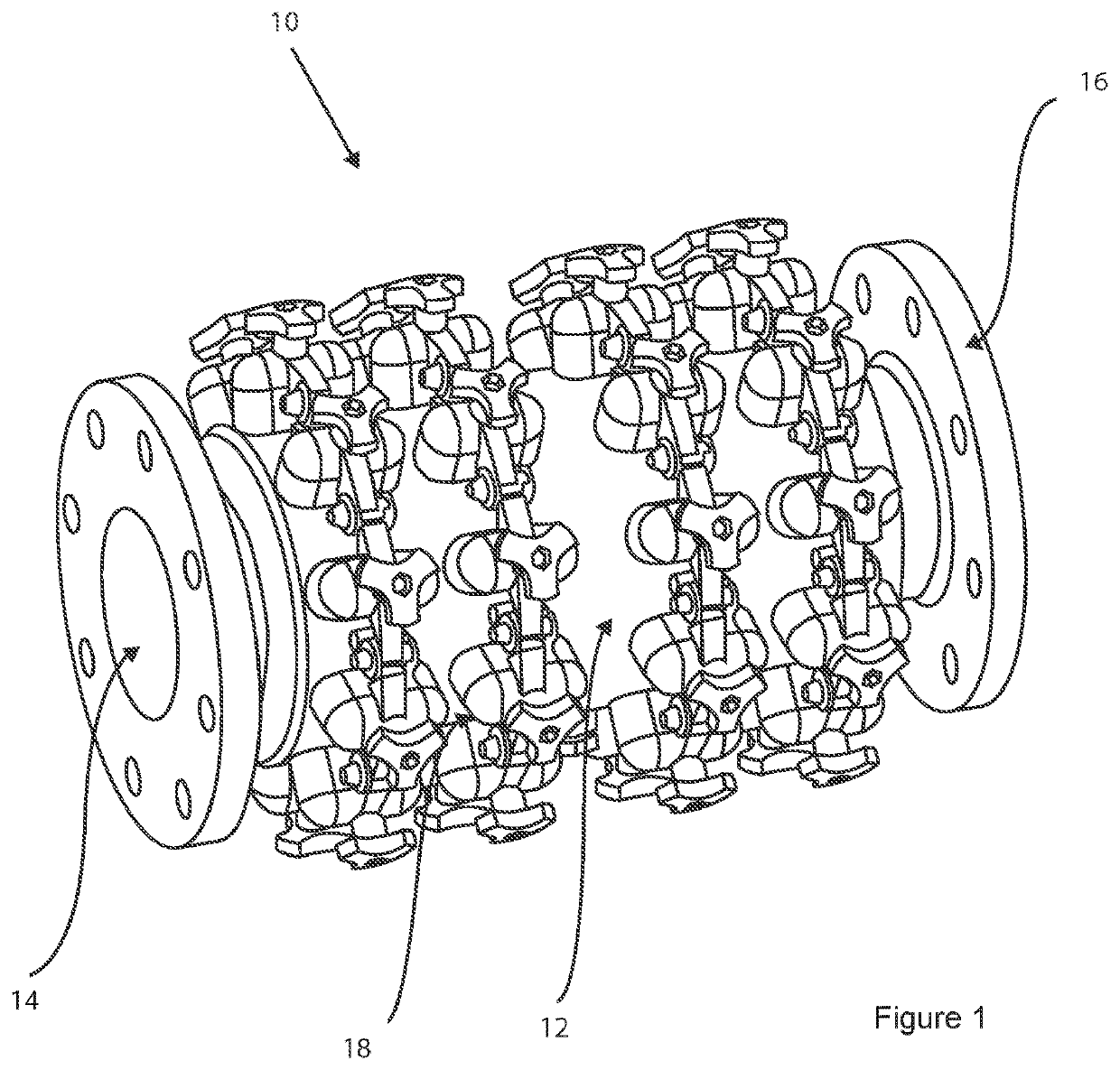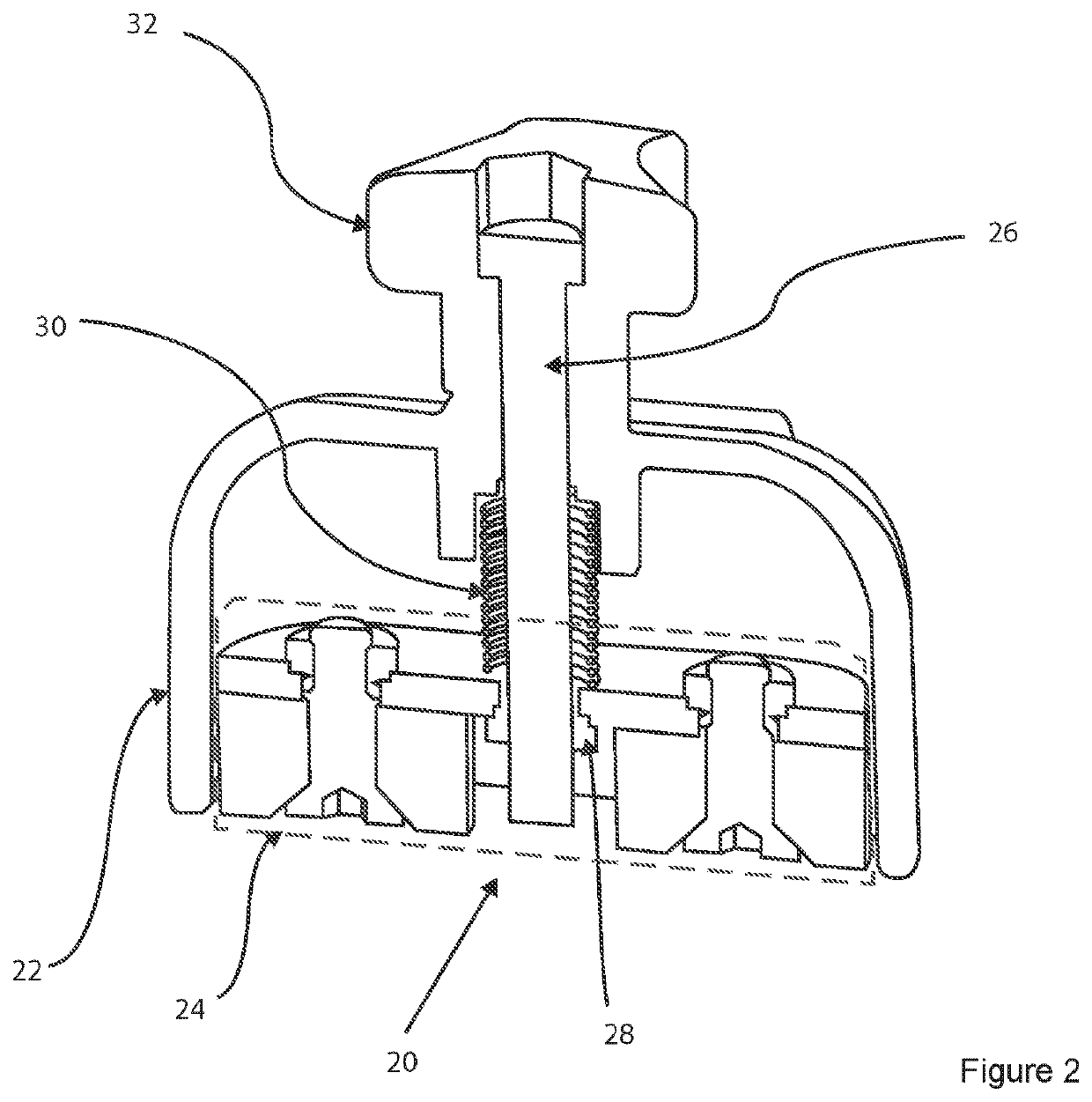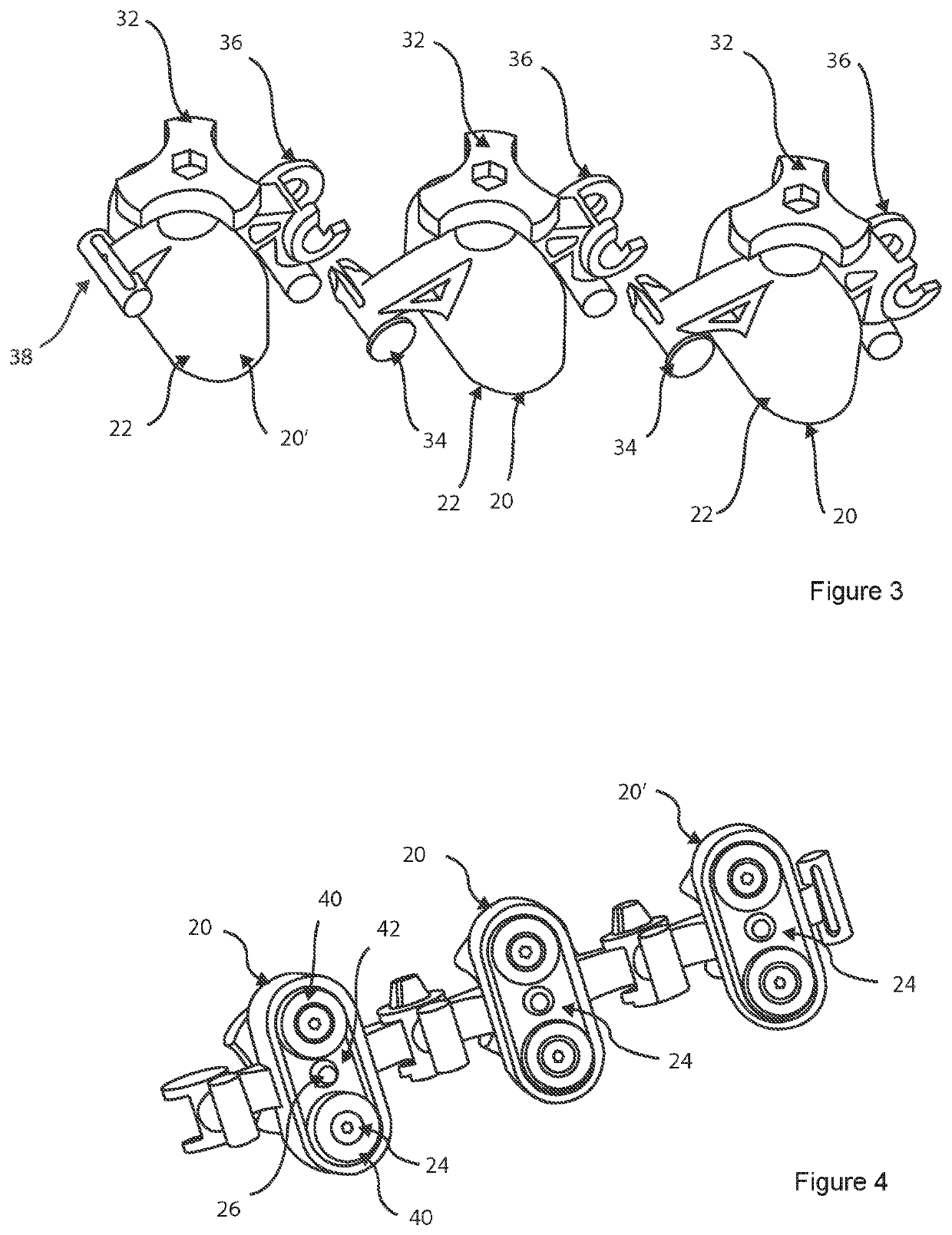Modular magnetic assembly
a module and magnetic assembly technology, applied in the field of module magnetic assembly, can solve the problems of not fully up against the outer surface of the housing, custom-designed external magnet assembly, poor performance, etc., and achieve the effect of easy movement of the magnet into the out-of-use position and high susceptibility to magnetization
- Summary
- Abstract
- Description
- Claims
- Application Information
AI Technical Summary
Benefits of technology
Problems solved by technology
Method used
Image
Examples
Embodiment Construction
[0031]Referring firstly to FIG. 1, a magnetic filter for a central heating system is indicated generally at 10. The magnetic filter comprises a filter body 12, which is in the form of a substantially cylindrical section of stainless steel pipe. Inlet and outlet ports 14, 16 are provided for connection into a central heating system circuit. Flanges surround the inlet and outlet ports 14, 16, for fixing the magnetic filter 10 to similar flanges on central heating system pipework. The magnetic filter 10 may be produced in various different sizes, for fitting to central heating system pipework having a diameter from around 2 inches (50 mm) upwards.
[0032]This particular embodiment does not include any valves or a drain port, but these can be interposed between the filter body 12 and the central heating system pipework, using off-the-shelf valve and drain components.
[0033]This embodiment is designed for fixing to 2 inch (50 mm) pipework, the bore diameter at the inlet and outlet 14, 16 is...
PUM
| Property | Measurement | Unit |
|---|---|---|
| diameter | aaaaa | aaaaa |
| flexible | aaaaa | aaaaa |
| mechanical advantage | aaaaa | aaaaa |
Abstract
Description
Claims
Application Information
 Login to View More
Login to View More - R&D
- Intellectual Property
- Life Sciences
- Materials
- Tech Scout
- Unparalleled Data Quality
- Higher Quality Content
- 60% Fewer Hallucinations
Browse by: Latest US Patents, China's latest patents, Technical Efficacy Thesaurus, Application Domain, Technology Topic, Popular Technical Reports.
© 2025 PatSnap. All rights reserved.Legal|Privacy policy|Modern Slavery Act Transparency Statement|Sitemap|About US| Contact US: help@patsnap.com



